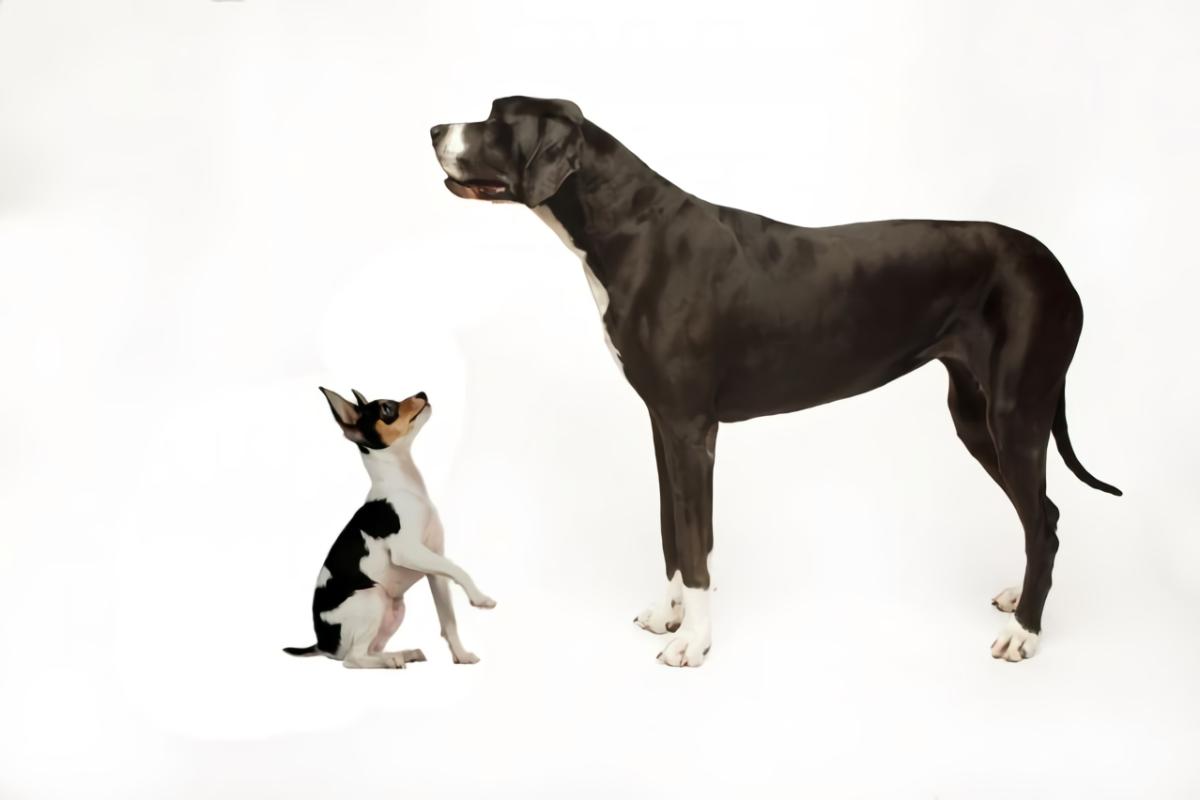Why do dog breeds come in so many different sizes and weights? The biggest dog breeds may be as much as 40 times heavier than the smallest. It’s possible that an inherited gene mutation transmitted by their distant ancestors is to blame. So, what exactly is the evolution behind this?
Dogs, which include breeds as diverse as the Chihuahua and the Great Dane, have more variation in body size than any other group of mammals, including cats which most are pretty much the same sized. For the first time, researchers have pinpointed the origin of a genetic mutation that contributes to these size discrepancies in an unlikely group: Extinct wolves.

In this case, the mutated DNA lies near a gene called insulin-like growth factor 1 (IGF1). In 2007, scientists found evidence that the growth hormone IGF1 influences canine stature. It was the pioneering discovery of a kind of gene that would eventually have a few dozen members named after it. But how exactly it influences animal size was unknown.
Dogs have been domesticated from wolves for nearly 30,000 years, and over that time there has been considerable variation in their sizes. The vast size disparities seen now are only a product of the last 200 years, when man first started breeding the present varieties.
Elaine Ostrander of the U.S. National Human Genome Research Institute in Bethesda, Maryland, and her colleagues investigated the genomes of over 1,400 canids, including extinct dogs, wolves, coyotes, and over two hundred and thirty present dog varieties, to determine how this evolution was feasible. One polymorphism on a stretch of DNA, encoding a so-called long non-coding RNA (lncRNA), stood out when researchers compared it to body size in domestic dogs and wild canids. This plays a role in the regulation of IGF1, a protein that acts as a growth hormone.
Large and Tiny Dog Breeds Are Separated by a Single Gene
Overall, scientists uncovered evidence for two different alleles: Two copies of an allele resulted in a lower body mass in canines of all sizes. On the other hand, dogs above 55 pounds (25 kilos) in weight were more likely to have two copies of the other allele. Ostrander found that animals with a single copy of each allele were most often of moderate size. Pups with two copies of the big body size allele also showed a greater IGF1 blood content than small-bodied dogs with the same number of copies.
A similar association was found when the team examined the genomes of other canids. According to Ostrander and coworkers, the allele for a tiny body is substantially older in evolutionary terms than the one for a big body. Most of the canids they looked at, including coyotes, jackals, foxes, and a few others, had two copies of the “small” gene, indicating that this variant had been present in a common ancestor.
The origin of the allele for a big size remains a mystery. The research group found that a type of wolf that existed in Siberia about 53,000 years ago possessed a copy of the variation. The large-body allele may have been beneficial to wolves since it is present in several ancient and some extant wolf populations.
How Did Wolves Give Rise to Dogs Looked Like?
No one really knows what the wolves that eventually gave rise to dogs looked like. While previous research suggested that recent genetic alterations, maybe peculiar to domestic dogs, were responsible for the diminutive size of canines, the new data cast doubt on this theory.
Insights from this research suggest that dogs descended from wolf variants that were smaller than modern gray wolves overall. We can only speculate as to the appearance of the wolves that were the origin of the domesticated dogs.
Some findings are also incomplete in other respects. For instance, the effect of the two alleles on the growth hormone IGF1 levels is not well understood. The gene variation is also not the sole factor in determining dog sizes. Only approximately 15% of the variance in breeds is thought to be attributable to the IGF1 gene, according to the research. This is not about a mutation that would make wolves the size of Chihuahuas. Those are just one of the numerous mutations that resulted in various sizes in dogs.


